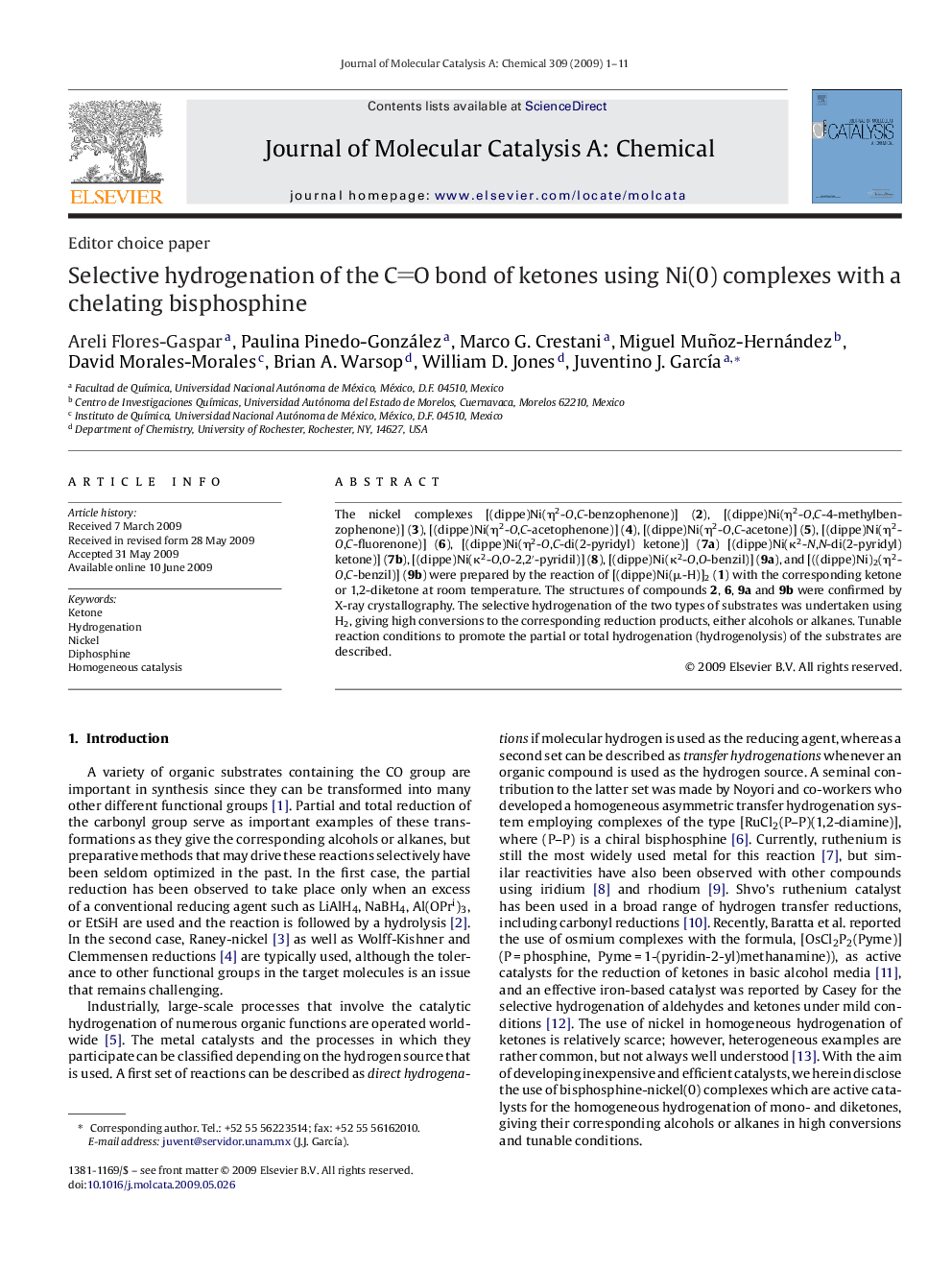| Article ID | Journal | Published Year | Pages | File Type |
|---|---|---|---|---|
| 67390 | Journal of Molecular Catalysis A: Chemical | 2009 | 11 Pages |
The nickel complexes [(dippe)Ni(η2-O,C-benzophenone)] (2), [(dippe)Ni(η2-O,C-4-methylbenzophenone)] (3), [(dippe)Ni(η2-O,C-acetophenone)] (4), [(dippe)Ni(η2-O,C-acetone)] (5), [(dippe)Ni(η2-O,C-fluorenone)] (6), [(dippe)Ni(η2-O,C-di(2-pyridyl) ketone)] (7a) [(dippe)Ni(κ2-N,N-di(2-pyridyl) ketone)] (7b), [(dippe)Ni(κ2-O,O-2,2′-pyridil)] (8), [(dippe)Ni(κ2-O,O-benzil)] (9a), and [((dippe)Ni)2(η2-O,C-benzil)] (9b) were prepared by the reaction of [(dippe)Ni(μ-H)]2 (1) with the corresponding ketone or 1,2-diketone at room temperature. The structures of compounds 2, 6, 9a and 9b were confirmed by X-ray crystallography. The selective hydrogenation of the two types of substrates was undertaken using H2, giving high conversions to the corresponding reduction products, either alcohols or alkanes. Tunable reaction conditions to promote the partial or total hydrogenation (hydrogenolysis) of the substrates are described.
Graphical abstractThe reduction of ketones and diketones to yield an alcohol or alkane can be selectively achieved with nickel complexes and properly selecting the reaction conditions.Figure optionsDownload full-size imageDownload as PowerPoint slide
